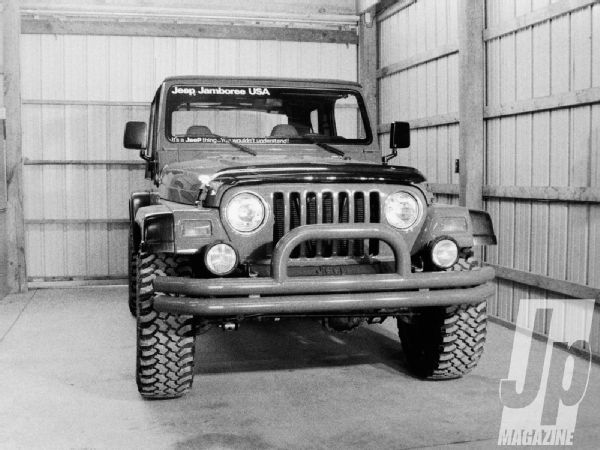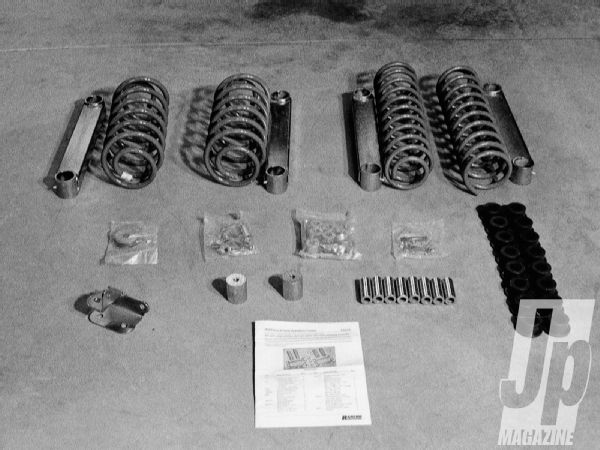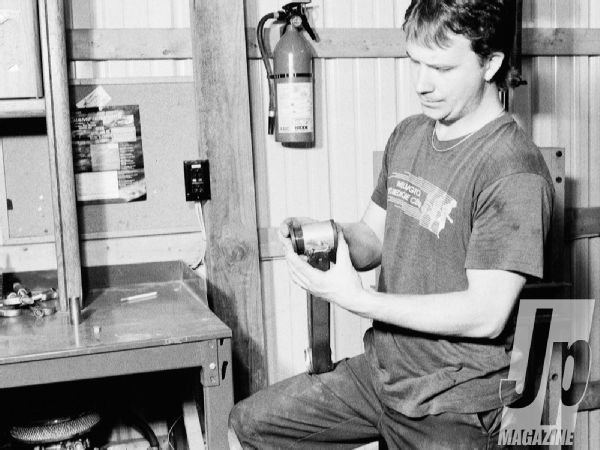
It seems like a short time ago that Jeep was heralding the introduction of a new and redesigned Wrangler for 1997. The changes to the YJ platform were the subject of much discussion among SUV enthusiasts everywhere.

Most folks had comments and questions about everything from the initial offering of airbags to the return to round headlights, but the one topic that generated the most interest among our trail-riding brethren was the quad-coil suspension. Many die-hard purists initially felt that once again off-road ability was being sacrificed for on-road handling.
 The Rancho kit comes with everything needed, including a detailed instruction manual with illustrations and photos.
The Rancho kit comes with everything needed, including a detailed instruction manual with illustrations and photos.
Our first testdrive was in a fully equipped 4.0L, five-speed model. The test trail at Performance Off-Road includes rockcrawling, hill climbing, and a goodly amount of mud. We admit to being quite pleasantly surprised at the capabilities of the TJ on all types of terrain and in all kinds of situations. On- and off-road, the TJ continued to impress and led us anxiously in pursuit of even greater vehicle performance.
We decided to start with a Rancho Suspension lift kit. The 2 1/2-inch kit provides everything necessary to completely upgrade the entire system. Four new coils provide the lift, and heavier lower suspension arms equipped with poly bushings and zerk fittings handle the locating chores. The taller coils require longer shocks, so the kit contains four Rancho RS9000 adjustable shocks. Also included: a transfer case skidplate relocator kit, a track-bar relocator assembly kit, a shift relocator kit, bumpstop spacers, and comprehensive, illustrated instructions. The instruction booklet suggests an installation time of six to eight hours. What follows is the step-by-step installation process.
 Installation prep includes lubricating the urethane bushings and sleeves and installing them in the suspension arms. Support the vehicle on jackstands.
TALE OF THE TAPE
ANGLES
Stock Suspension
Rancho Suspension
AND CLEARANCES
with 31/10.50 Tires
with 33/12.50 Tires
Approach Angle
43 degrees
52 degrees
Departure Angle
25 degrees
34 degrees
(due to low receiver hitch)
(same hitch)
Front Differential Clearance
9.25 inches
10.75 inches
Rear Differential Clearance
9.25 inches
10.75 inches
Skid Plate Clearance
9.75 inches
12.75 inches
PhotosView Slideshow
Installation prep includes lubricating the urethane bushings and sleeves and installing them in the suspension arms. Support the vehicle on jackstands.
TALE OF THE TAPE
ANGLES
Stock Suspension
Rancho Suspension
AND CLEARANCES
with 31/10.50 Tires
with 33/12.50 Tires
Approach Angle
43 degrees
52 degrees
Departure Angle
25 degrees
34 degrees
(due to low receiver hitch)
(same hitch)
Front Differential Clearance
9.25 inches
10.75 inches
Rear Differential Clearance
9.25 inches
10.75 inches
Skid Plate Clearance
9.75 inches
12.75 inches
PhotosView Slideshow

















